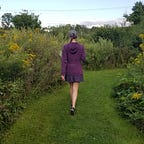The Mississippi Flyway
A Memphis River Parks Birding Adventure
by Elizabeth Richards, Special Projects and Design Intern
One of the most important migratory routes in North America is the Mississippi Flyway, which follows the course of the mighty Mississippi River from Canada to the Gulf of Mexico. If you’re a bird lover, you’ll be thrilled to know that Memphis is a key stopover along this route and home to many resident and migratory species. From majestic Bald Eagles and Red-tailed Hawks to colorful Yellow Warblers and Chipping Sparrows, there are always exciting birds to see.
The Mississippi Flyway encompasses a variety of landscapes that support different types of birds. Memphis River Parks covers 250 acres of diverse riverfront landscapes. The Partnership works hard to enhance the habitat potential of these areas to attract even more beneficial wildlife. The parks are open to the public, so grab your binoculars and explore the amazing world of birdwatching in the Memphis River Parks!
Wetlands and Floodplains
Wetlands and floodplains provide an ideal habitat for waterfowl, such as ducks and geese. These areas attract wading birds like Egrets, and White Ibises, which use their long legs to forage for fish and other aquatic creatures like crayfish and insects. Wetlands also provide important breeding sites for birds like rails, gallinules, and coots.
The southernmost point of Mud Island Park and western edge of Greenbelt Park feature floodplains that attract waterfowl like Mallards, Yellowlegs, Sanderlings, and Green Winged Teal Ducks. Keep an eye out for Great Blue Herons and Killdeer, which can be spotted in open spaces of the Cobblestone Landing and Mud Island’s South Point — listen for their familiar “killdeer” call!
Rivers and Streams
Rivers and streams play a crucial role in providing habitat for waterbirds like ducks, geese, and shorebirds, while riverbanks provide nesting sites. Watch for Bank Swallows that dart across the river’s surface from Big River Crossing or Greenbelt Park. You might even spot birds of prey like Golden Eagles, Ospreys, and Cooper’s Hawks, which rely on rivers and streams for their daily sustenance. If you’re lucky, you may glimpse these soaring birds in action!
Forests & Urban Canopy
Forests provide another vital habitat for birds along the Flyway. The Memphis River Parks canopy supports a wide variety of species, each with their own unique ecological requirements. Forests provide safe shelters and food for birds like warblers, vireos, and thrushes during migration. Tall trees with touching canopies provide large predators like Red Tail Hawks with hiding places to watch their prey from above.
Walk or bike the River Line and listen for Pileated or Downy Woodpeckers, or maybe even a rare Northern Flicker tapping above your head! The forested banks of Ashburn Coppock and Martyrs Parks are also perfect places to find year-round residents like Blue Jays, Cardinals, tiny Ruby-crowned Kinglets, Red-winged Blackbirds, Dark-eyed Juncos, and Cedar Waxwings.
Meadows, Grasslands and Open Areas
Open landscapes provide important breeding grounds for birds like meadowlarks, sparrows, and bobolinks. During migration, these habitats serve as crucial stopovers for many bird species. Predators like Barn owls and Mississippi Kites are fascinating hunters that also rely on open areas to find prey such as mice, voles, and shrews.
Spend an afternoon in Fourth Bluff Park or River Garden where meadows and fruiting trees provide a habitat for raptors. You might spot a hawk or kite flying by in search of their next meal. Keep an eye out for Orchard Orioles too! They prefer to nest in trees near open fields, where they can easily forage for insects and fruits.
Helpful Birding Apps
Sometimes it can be hard to spot these birds but listen carefully for their calls! Merlin Bird ID is a free app that identifies birds in real time. You can use its listening feature (‘Sound ID’) to identify bird songs or upload images to their ‘Photo ID’ feature.
Share your findings with others by posting information to iNaturalist and see what wildlife other visitors are seeing in the parks!
The Mississippi Flyway offers a stunning array of bird species that grace the Memphis River Parks. With the parks open to the public, you can grab your binoculars any time and explore the amazing world of birdwatching. Observe wading birds along the Mississippi floodplain, waterbirds in the Wolf River Harbor, songbirds in the shrubs and predators in the canopy. Come to the River across the seasons to witness the changing migratory populations. And when you’re ready for even more adventure, head to Shelby Farms, Meeman-Shelby Forest State Park, or the Lichterman Nature Center to continue your Memphis birding journey.
